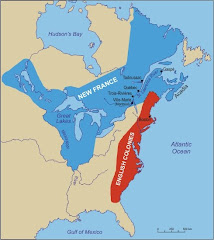Black Robe (1991)
 Adapted by Brian_Moore from his own novel, The Black Robe is a sprawling recreation of a turbulant period in Canadian history. In 1634, Jesuit missionary Father Laforgue (Lothair_Bluteau) arrives in the New World, hoping to convert the Huron Indian tribe to Catholicism-and, incidentally, to expedite the French colonization of Quebec. Laforgue is regarded with a combination of warmth and wariness by the natives, who refer to Laforgue and his fellow priests as "black robes". Offering his services as both guide and friend is Algonquin chief Chomina (August_Schellenberg). The by-the-book Laforgue does little to endear himself to the Indians-one of whom, a holy man, labels the priest as a demon who will bring nothing but death and destruction. The one who suffers most is Chomina, the man who most desires peaceful coexistence. In an ironic coda, we learn that the "black robes" have set into motion the fall of the Hurons, simply by imposing their Christian values upon them.
Adapted by Brian_Moore from his own novel, The Black Robe is a sprawling recreation of a turbulant period in Canadian history. In 1634, Jesuit missionary Father Laforgue (Lothair_Bluteau) arrives in the New World, hoping to convert the Huron Indian tribe to Catholicism-and, incidentally, to expedite the French colonization of Quebec. Laforgue is regarded with a combination of warmth and wariness by the natives, who refer to Laforgue and his fellow priests as "black robes". Offering his services as both guide and friend is Algonquin chief Chomina (August_Schellenberg). The by-the-book Laforgue does little to endear himself to the Indians-one of whom, a holy man, labels the priest as a demon who will bring nothing but death and destruction. The one who suffers most is Chomina, the man who most desires peaceful coexistence. In an ironic coda, we learn that the "black robes" have set into motion the fall of the Hurons, simply by imposing their Christian values upon them.
Your task:
1) Describe the setting of the French village at the beginning of the film. What different types of people do you see? What are they doing?
2) What do Champlain and the Algonquin leader Chomina do that is similar before meeting? Why do the Algonquins agree to guide Father Laforge (Black Robe) on his journey to the Huron Mission?
3) How do the French and various aboriginal groups (e.g., Algonquins, Montagnais, Hurons, etc.) view each other in the film. In your opinion, do they respect each other's cultures?
4) Describe the Iroquois village. What is surprising about how the village looks?
5) What is happening among the Hurons when Black Robe arrives? How do they greet him?























